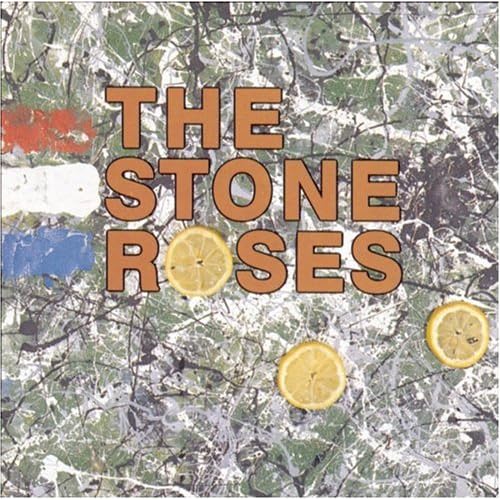
Manchester boasts arguably the most fertile British rock soil, having birthed a million bands from John Mayall and the Bluesbreakers to 10cc to the Buzzcocks and the Smiths. In my lifetime, the scene was never hotter than in the mid-to-late 1980s, when it was dubbed “Madchester” and gave rise to a bunch of bands that all quickly came and went. One of the first, and the hottest, was the Stone Roses, whose self-titled debut hit American shores in 1989.
Not a lot of Americans hipped themselves to The Stone Roses, which is a shame, because it contained some rockin’, melodic tuneage that provided an antidote to the synth-y tripe, hair-metal power ballads, and teenybopper nymphs like Tiffany and Debbie Gibson polluting the charts at the time. These guys shut up and played their funky guitar lines that took their cues straight from James Brown and Parliament as much as they did their 1960s English pop forebears.

As both a music fan and a critical listener, I’m not one to be swept away by fads or the popular-at-the-moment stuff. I either like it or I don’t, and I don’t need New Musical Express fawning and gushing over the Roses as if Reni, Mani, John Squire and Ian Brown were the second coming of John, Paul, George, and Ringo to determine whether or not they’re cool. Despite the constant promotion of the Madchester scene by the likes of NME and my pal/musical muse Bryan, I didn’t really dig the scene that much. It sounded like every song was just another remix of “Funky Drummer,” some more cleverly disguised than others. Which pretty much echoed half the dance mixes going on stateside, too.
That being said, NME was partly right: These Stone Roses guys were something different. Maybe not Beatles good, but pretty innovative and energetic and one in mission, playing together. The arrangements were sometimes artfully complex: Check out the slow build of “Waterfall,” its bassline mimicking water cascading over rocks. Or the elegant pop of “(Song for My) Sugar Spun Sister,” which also takes its time getting to the hook yet comes in at an economical 3:27. Listening to the record in iTunes, I see how “Bye Bye Badman” and the epic, Stairway-to-Heaven-long closing track “I Am the Resurrection” take even longer to get to the point, but oddly I’ve never noticed. They’ve always seemed, just, perfect as played.

Fans hung with the Stone Roses’ sometimes complicated songs because the hooks would always come, sooner or later, and they were always worth the wait. My personal favorite, “She Bangs the Drums,” gets to the hook right off. The album’s material was all killer, no filler, and referenced painter Jackson Pollock as an inspiration in its lyrics and album cover to boot. No wonder the American record-buying public passed on The Stone Roses.
As for me, I was smitten. I put Bryan, who was a graphic design student, on to the project of painting my jacket like the cover (“Can’t be hard, right, buddy? Just splatter some paint and throw down some letters!”) He’d just come off the smashing success of painting an arm-in-arm punk Bert & Ernie (decked out in lots and lots of spikes, with big goofy grins) on the back panel of his leather biker jacket.
He did the best he could on mine, with acrylics and some other stuff. Painting that lemon slice would prove to be a bear, but what did I know? Word people think painting’s pretty simple. The jacket turned out great. Wearing itÁ‚ instantly made me–on the entertainment staff for the newspaper catering to the 15,000-student campus–one of the coolest, most recognizeable dudes around, if you weren’t counting those dudes who could dunk basketballs. No one knew who The Stone Roses were, or where I got that jacket!
About that time, The Stone Roses went to war with its label, Silvertone, and took years to follow up its debut with Second Coming on Geffen, a muddled affair that neither measured up to the debut nor stood on its own–which it needed to, because by then most of the other Madchester bands had dissipated into the smoggy industrial rubble of the city. There was no scene left. Soon after, The Stone Roses’ inevitable breakup left a vacuum in British rock royalty into which Oasis stepped, dropping some catchy tunes of their own along the way.
Twenty years on, NME still pipes off embarrassingly about how the Roses were equals to the Beatles, breathlessly covering every weak rumor of a reunion. There’s a super-deluxe retrospective box on its way late this summer celebrating that myth. It includes everything Roses that money can buy, including an over-the-top thumb drive of artwork.
For this critic’s money, looking back with crystal-clear, 20-20 hindsight, the Charlatans U.K. turned out to be the most stable, substantive, and enduring of the Madchester acts. Their songs best stand the test of time; I still play their many records today, including the less well-known but much more satisfying 1990s output. Happy Mondays had the hands-down best hit with “Step On” and its catchy “Ya twistin’ my melon, man!” line. Clint Boon and the Inspiral Carpets had the sound most authentic and loyal to the 1960s Britpop invaders.
But it was the Stone Roses who were my first love. Put on “She Bangs the Drums,” and I can literally smell my college’s green again. I start fumbling around for an unfiltered Camel, even though I haven’t carried a pack regularly since my early 20s. Few records enrapture me once, let alone every time they’re played over a two-decade span. Like most of us, I’m just too fickle, jaded, and have too short of an attention span to be captivated by a single pop record. The Stone Roses didÁ¢€”and continues to.
And whatever became of Bryan? We’ve maintained our friendship, and stood up at each other’s weddings. The jacket’s still with me, at least in spirit. At some point I picked up a seam-ripper and disassembled it. Too many nights in clubs and engaging in other nefarious enterprises had frayed its stone-washed sleeves andÁ¢€”despite repeated handwashings and sun-bleachingsÁ¢€”the thing downright reeked. So the sleeves and collar and waist went in the trash, and I saved the back panel featuring Bryan’s artwork and mounted it in a shadow box. It hangs on my office wall, on and off. Right now, it’s in the attic, and that’s where I photographed it for this essay, among the spider webs and insulation. Old Bryan did a fine job, didn’t he, for 3-4 hours’ work with just a little tracing-paper sketch and laser print type to guide his paint-dipped brush?


![Reblog this post [with Zemanta]](http://img.zemanta.com/reblog_e.png?x-id=0f9fbada-c642-4194-8362-3be21324920d)



Comments